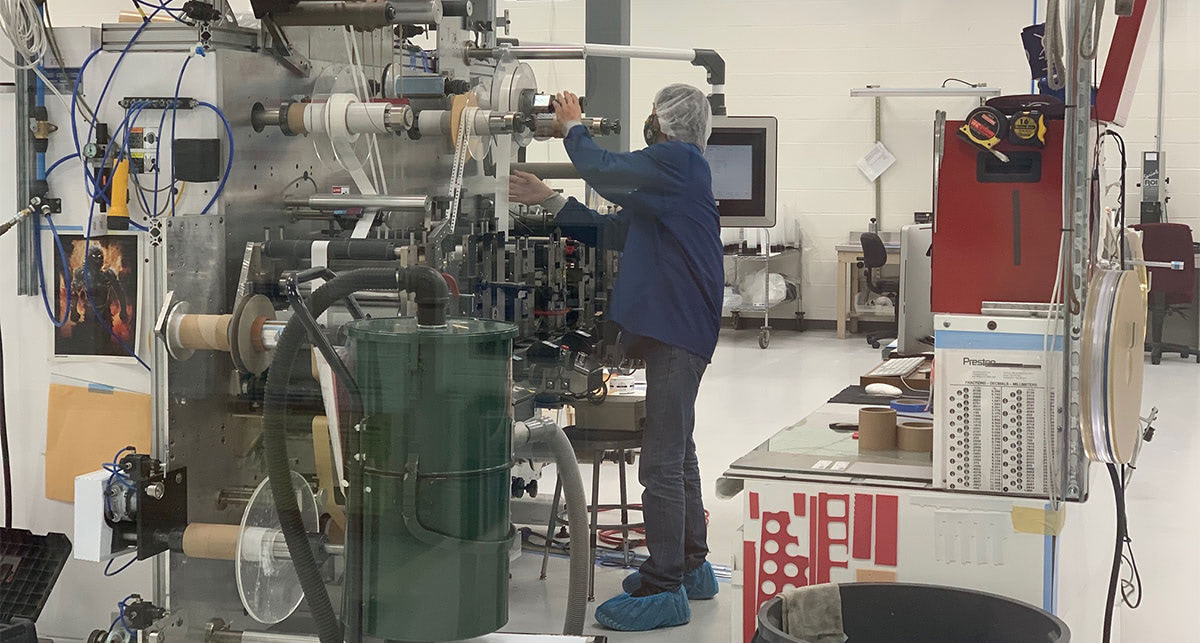If you’ve recently turned on a TV, opened Twitter (“X”), or glanced at a magazine in the local grocery store, then you may have heard the latest on U.S. President Donald Trump imposing tariffs—a.k.a., a series of trade policies with sweeping effects on the global economy.
In response, business executives have sprung into damage control mode, asking, “How will this affect my products? Do I need to reshore?” and “What does this mean for my business?”
As a U.S. manufacturer, Strouse has spoken to an increasing number of companies asking whether it’s in their best interest to shift towards domestic production. Yet, the relationship between tariffs and manufacturing, plus their effects on a production line, varies from business to business.
This article will help you make strategic decisions by providing information about tariffs and outlining your available options.
The Relationship Between Tariffs and US Manufacturing
Tariff implementations have occurred throughout U.S. history, affecting imports such as manufactured goods and raw materials.
For example, George W. Bush’s 2002 tariffs on imported steel and Donald Trump’s 2018 tariffs on solar panels, washing machines, steel, and aluminum both naturally led to higher input costs (i.e., the expenses to purchase resources, materials, and services to build a product). Higher input costs are known to “result in both higher prices for consumers and reduced output" for manufacturing, construction, and transportation.
And while we may not be able to predict the extent to which the Trump Administration’s tariffs will impact costs for manufacturers yet, it’s safe to say that certain aspects are likely to react as they have in the past:
- Rising input costs
- Delayed and disrupted supply chains
And while some may argue that these tariff effects are only an issue in the short term, multiple long-term studies allude to the contrary. Therefore, preparing your business to react to and manage these tariffs early on should be a high priority.
Preparing Your Business to Face the Effects of Tariffs
If you suspect that your business will be affected by tariffs, you’ll want to do the following.
1. REVIEW YOUR CURRENT OPERATIONS
Which products have been affected by the tariffs? How are your suppliers affected? Does this change your compliance requirements? Are there tariff saving possibilities?
For each product, you’ll want to understand the areas where your supply chain is most at risk and the immediate impact. Once you have allocated your resources to managing the most pressing issues, you can begin to build a more concrete long-term plan.
2. MAKE A FALLBACK PLAN
Do you have enough stock to last you through a potential disruption? Have you worked with reliable secondary suppliers?
Making quick preparations could mean the difference between a bump in the road and a total car wreck. Planning far in advance (e.g., preparing stock, finding secondary suppliers, pursuing tariff savings) will help protect your business from delays and supply chain disruptions.
3. CONSIDER YOUR MANUFACTURING OPTIONS
If your business has been affected by tariffs, you will likely choose one of the following options.
-
PAYING THE HIGHER RATES (TARIFFS)
One seemingly simple option is to pay the higher rates brought on by tariffs. This may work for certain companies depending on their size and the nature of their products, but others might be unable to afford the import costs. Either way, other options are still worth considering as the industry shifts to allow for more U.S.-manufactured goods.
-
RE-SHORING BUSINESS TO A U.S. MANUFACTURER
As U.S. converters ourselves, we are an admittedly biased source, but the fact is that many existing American companies are eager to support new business previously located overseas.
The most common concern with U.S. manufacturing is labor costs, yet using high-tech automation or new process innovations to achieve high labor productivity could help offset costs. Of course, this will likely depend on your product and industry.
Recent tariffs could be an excellent opportunity for some companies to move toward U.S. manufacturing. For others, it may make more sense to buckle down and pay the tariffs.
-
RE-SHORING TO A NON-U.S. MANUFACTURER
Many countries have been affected differently by the latest tariff rates, meaning you could still look elsewhere for a better price point. Of course, if it’s not within the U.S., there is no guarantee that the tariff policies will not simply shift to meet you at your new manufacturing facility, which is a risk you may choose to take.
Whether you move production to America or another country, remember that relocating production requires time, which you should factor into inventory planning.
-
DISCONTINUING A PRODUCT LINE
This list wouldn’t be complete without suggesting this unfortunate, but sometimes necessary solution. If a product is too expensive to manufacture, and there aren’t any feasible design or process optimizations, it may have reached the end of its lifespan.
Finding American Manufacturing Partners
American manufacturers are plentiful, but it can be a challenge to find a trustworthy partner who will take the time to understand your design’s purpose and collaborate with your technical experts to devise the best solution.
If you’re searching for flexible materials and/or custom part components, consider working with Strouse.
As a Maryland-based manufacturer, Strouse prides itself on collaborating with a wide range of businesses throughout the United States. Contact us today, and we will help you begin your product development journey anew.
If you’re interested in seeing how we can help you, check out our capabilities for more details.
Author’s note: If you were unable to access any of the online news sources due to paywalls, I recommend using a library account! Thank you.







